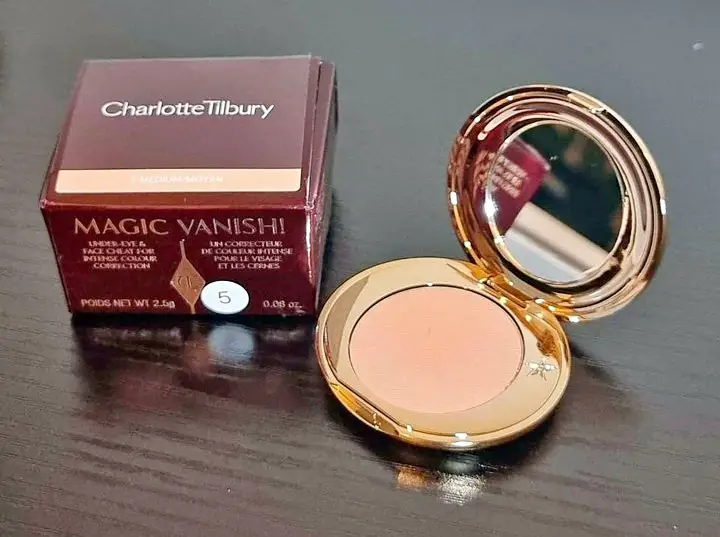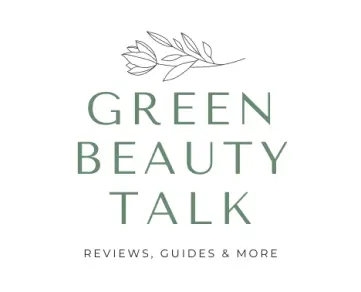Just recently, I came across a beauty brand named Charlotte Tilbury, and immediately a couple of questions popped into my mind: Is this a natural brand? How natural are their products? So, without further ado, I decided to play detective and bring my findings to you on this blog.
If you’re as curious as I was and wondering if Charlotte Tilbury is a clean brand, then join me on this journey as we delve into the nitty-gritty of their product ingredients. I’ll be examining some of their popular skincare and makeup products and, together, we’ll see what we uncover. So, are you ready? Let’s get started!

Charlotte Tilbury Values
Before we dig into the products, let’s first skim through Charlotte Tilbury’s values. It’s often a good starting point to understand a brand’s philosophy around ingredients.
Here are the core values of Charlotte Tilbury, according to my investigation:
- Empowering Confidence: They believe in giving everyone access to products that can boost confidence and help one feel like their most stunning self.
- Innovation and Quality: They’re always in pursuit of the next big thing in beauty, delivering top-tier, research-powered skincare and makeup magic.
- Cruelty-Free: Approved by Cruelty Free International’s Leaping Bunny Programme, maintaining a cruelty-free commitment since their launch.
- Vegan-Friendly: A thoughtful range of products caters to their vegan customers.
- Selective Paraben-Free: While not entirely paraben-free, they do offer a selection of paraben-free products.
To be honest, looking at Charlotte Tilbury’s values didn’t reveal much about how natural this brand is. The only useful thing I managed to find is that some of their products contain parabens which is a red flag for me. Clean beauty brands for sure don’t use parabens which may or may not be harmful (some research says they are safe but more research is needed in this field).
They don’t mention nature or natural ingredients in their core values, something that ranks high on the list for many clean beauty brands. It appears that for them, it’s more about being cruelty-free and boosting women’s confidence.
So now let’s move on and see what ingredients some of their products contain.
In the following sections I will be analyzing the products from several angles: looking at their EWG rating and researching their flagged ingredients to see whether there is a reason for concern.
Charlotte Tilbury Matte Revolution Lipstick, Pillow Talk Original
Delving into one of their bestsellers, this lipstick boasts a blend of both natural and synthetic ingredients. It features natural antioxidant extracts and vitamin E, offering a protective barrier for the lips against environmental aggressors.
Ingredients Breakdown
Peeking at the list, many ingredients are tongue twisters. Neopentyl Glycol Dicaprylate/Dicaprate, the first on the list, serves as an emollient. Although it could be naturally derived or synthetic, given that the brand doesn’t focus on naturally derived ingredients, I will assume it’s the latter.
Another biggie, Trimethylolpropane Triisostearate, despite its intimidating name, is relatively low-hazard and safe. Several other synthetics with tongue-twisting names also make an appearance.
On the brighter side, the list also includes some recognisable natural ingredients, like Safflower Seed Oil, Corn Oil, and extracts of papaya fruit, Orchid (Phalaenopsis Amabilis Extract), and Bixa Orellana Seed.
Common ingredients like silica and mica stand out too. Silica, a natural compound found in sand, is safe unless inhaled. Mica, a mineral, is deemed safe in makeup.
Ethyl Vanillin, which sounds like a fragrance ingredient, turns out to be just that – a harmless synthetic one.
EWG Rating
EWG gives this product a medium hazard score of 4. While it has many safe ‘green’ ingredients like Polyethylene and Polybutene, they aren’t necessarily natural.
Allergy Alert
Ingredients like BHT (preservative), safe for food as per FDA, might trigger allergic reactions. It’s a common addition to foundations and lipsticks.
Colouring agents
The lipstick gets its signature hue from various colouring agents, several flagged on EWG:
- Iron Oxides (CI 77491, CI 77492, CI 77499) – EWG score 3, medium hazard. Nanoparticles might get absorbed into the skin and accumulate in the body.
- RED 7 LAKE (CI 15850) – EWG score 3. A synthetically produced pigment possibly contaminated with heavy metals. Usually tested for safety. All in all, in low concentrations this ingredient is safe.
- Blue 1 Lake (CI 42090) – EWG score 8, high hazard but dependent on usage. Can be harmful when inhaled, may contain heavy metals but is generally non-toxic and approved by FDA.
- Carmine (CI 75470) – A natural pigment derived from insects, making the product non-vegan. Some might experience severe allergic reactions to it.
Final verdict
After dissecting this lipstick, it’s clear to me: it’s not a ‘natural’ product. While it does have some nature-derived goodies, synthetic ingredients take center stage. Some, like the colouring agents, can sink into our skin and possibly contain heavy metals. Of course, if they pass the purity test, we can heave a sigh of relief.
Just remember, if you’ve got a sensitive skin type, do a patch test before slathering it on. Not all ingredients play nice with everyone!
Magic Cream Moisturiser Deep-Dive
Charlotte Tilbury’s award-winning Magic Cream Moisturiser steps into the spotlight next. It promises to turn your skin from ‘meh’ to ‘magic’, boasting hydration, dewiness, and a plumped-up complexion. So, what’s the secret behind the magic? It’s all in these eight ingredients:
- Bionymph Peptide
- Vitamins C & E
- Rosehip Oil
- Hyaluronic Acid
- Frangipani Flower Extract
- Camellia Oil
- Aloe Vera
- Shea Butter
Pretty impressive list, right? Most of these are familiar friends, apart from the Bionymph Peptide (a plant stem cell extract) and Frangipani Flower Extract (a flower extract with a ton of skin benefits). Together, they aim to bring a youthfully fresh and hydrated glow.
So far, so good… I love the sound of these natural ingredients. What about the rest? A complete list of ingredients is very long! After water, the second major ingredient is C12-15 Alkyl Benozate – not exactly ‘natural’, but according to EWG, it’s harmless and serves as a skin conditioning agent.
A handful of other ingredients follow suit, a mix of both natural and synthetic: Glyceryl Stearate SE, Butylene Glycol, Glycerin, Olus Oil/Vegetable Oil/Huile Végétale, Isononyl Isononanoate, Cetyl Alcohol, Ethylhexyl Palmitate.
To decode a few, Glycerin is naturally derived, usually from vegetable oils or animal fats, while Butylene glycol comes from sugarcane. Cetyl Alcohol is made from vegetable or animal fats and is very hydrating to the skin, despite being called “alcohol”.
Ethylhexyl Palmitate or Palmitic acid is naturally found in plants and animals but can also be synthesized. It helps improve moisturise loss in the skin, reducing dryness.
On to the potential troublemakers: Cyclopentasiloxane (EWG score 3) is an emollient with potential environmental toxicity, and Dimethicone (EWG score 4) works as a lubricant and conditioning agent. Although it’s perfectly safe for humans, it’s not safe for the environment as it’s non-biodegradable so it can accumulate in nature.
Next, we find Phenoxyethanol, a preservative which might cause allergic reactions in some. Shea butter, one of the ‘magic’ ingredients, surprisingly appears further down the list, hinting at a dominance of synthetic and less costly moisturising elements.
Let’s quickly mention Steareth 21 (EWG score 2) – synthetic, FDA-approved, with some contamination concerns if not properly purified.
It’s impossible to analyse all the ingredients in detail as it is such a long list, but let’s remember – even natural ingredients like rosehip oil and rose extract can provoke allergies, hence their EWG score of 3.
Other potential red flags (with EWG scores of 3 or more) include:
- Tocopheryl Acetate – a form of vitamin E but with allergy and contamination concerns (Hydroquinone, a human toxin).
- Sodium Lactate – a component that naturally occurs in the skin. A strong humectant that helps the skin stay moisturised. Also a preservative. There are no safety concerns but it needs to be used in allowable concentrations.
- PEG-8 – synthetic ingredient deemed safe on the skin but there are some contamination concerns (ETHYLENE OXIDE, 1,4-DIOXANE)
- Chlorphenesin – this antimicrobial preservative comes with EWG’s rating of 4 due to the possibility of allergic reactions and its toxic nature in high concentrations.
EWG Rating
So, on EWG’s scale, Magic Cream gets a score of 4 out of 10 (1 being safe, 10 being most hazardous). You might be surprised, but that’s the same score as my favorite all-natural cream, Weleda Skin Food. This goes to show, natural doesn’t always mean risk-free (that’s because it contains fragrance and lanolin, potential allergens).
Final Verdict
So, in this product, we’ve got a bit of a mix – some natural ingredients, but also a hefty dose of synthetic stuff. It’s not the worst offender on the market, though – it’s worth noting it’s paraben-free, which is a plus for those of us who like to avoid potential nasties.
What’s more, this cream gets rave reviews from users, even those with the diva-like, demanding skin. It’s a crowd pleaser, that’s for sure. It’s also clinically proven to boost hydration and reduce the appearance of wrinkles. Not to mention, that it has won over 11 awards.
People are seeing results and loving the feel of their skin after use. So, that’s a point in its favor – if it was that bad, would we have so many happy customers?
Remember, every skin is unique. What works for others might not work for you, and vice versa. So, even if it’s got a few synthetic ingredients, if your skin is singing praises after using this, then who am I to argue? But if you’re all about the natural life, you might want to look elsewhere.
And there you have it. My two cents on the Magic Cream Moisturiser. Your move!
ENJOY 10% OFF WHEN YOU SIGN UP TO EMAIL AND TEXT
Is Charlotte Tilbury a clean brand?
After having a good rummage around the ingredients of a couple of Charlotte Tilbury’s best-selling products, it’s pretty clear to me that it doesn’t quite hit the mark of being a ‘clean’ brand. Yes, they’ve got some natural ingredients in their mix, but their recipes are mostly bubbling with synthetic ones. So, if you’re on a mission to make your beauty routine completely natural, this probably isn’t your brand.
Now, don’t get me wrong – Charlotte Tilbury certainly has its strengths. Their products are chic, they feel luxurious, and they’ve garnered a serious fan base. But ‘clean’? Not so much. And that’s okay! Every brand has its niche.
But for those of you wanting to dive deep into the world of clean beauty, fear not! There’s a whole bunch of brands out there that tick all the right boxes. Brands like Weleda, Green People, Odylique, and Neal’s Yard Remedies are a few that have really impressed me.
These brands not only stick to natural ingredients, but they’ve also got products that are seriously effective. We’re talking ‘your skin looks like it had a refreshing spa day’ effective. These are brands that have made a commitment to clean, green beauty and are rocking it. So, if you’re committed to going the clean route, you’ve got some solid options right here.

Petra Nakashian (previously Kravos) is a dedicated natural health and beauty blogger, driven by the loss of her parents to cancer, which led her to meticulously research beauty product ingredients. With over 10 years of experience, her in-depth knowledge has made her a trusted expert in the field. Founder of Be Healthy Now and Green Beauty Talk, Petra recently expanded her expertise with Beauty Insights Hub, exploring a wider range of beauty treatments. Committed to transparency and honesty, her work is a vital resource for navigating the complex world of beauty.

